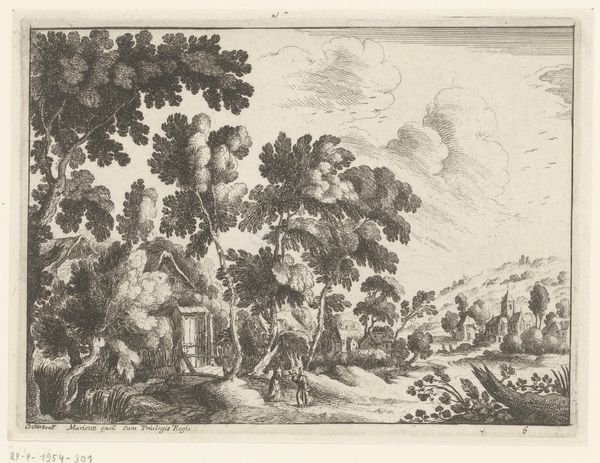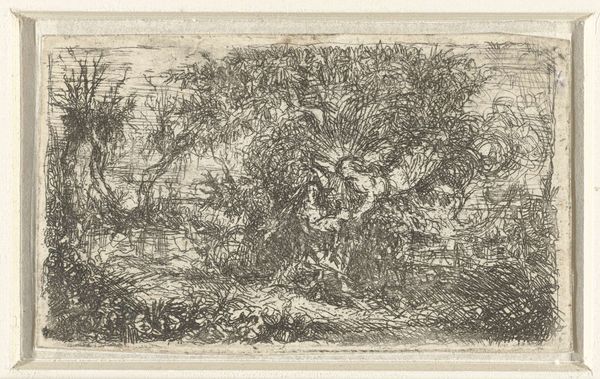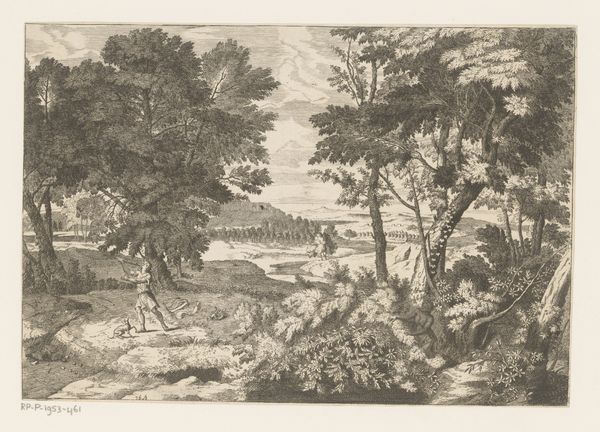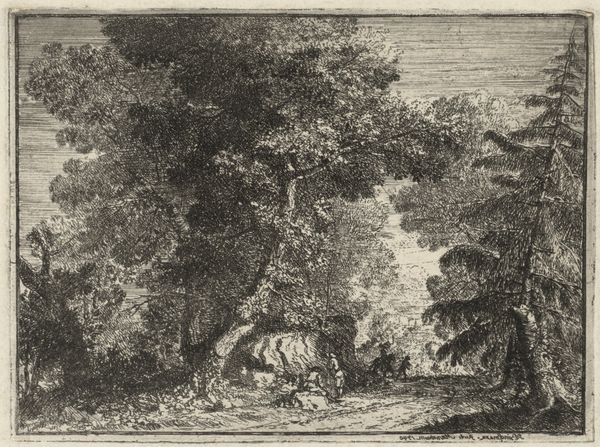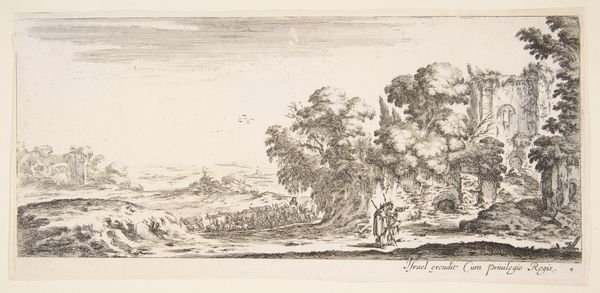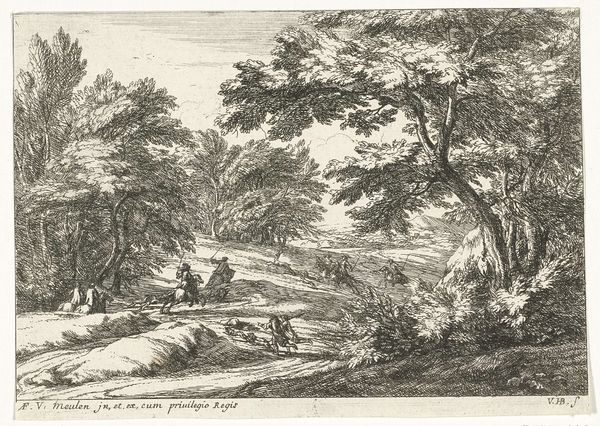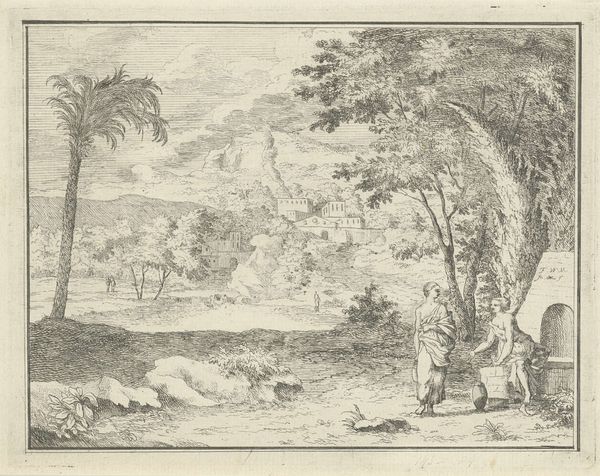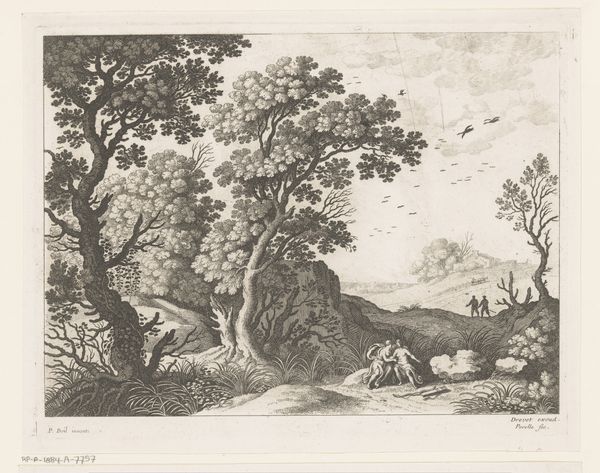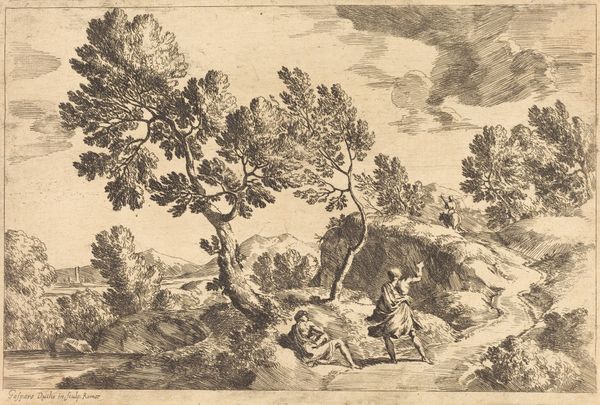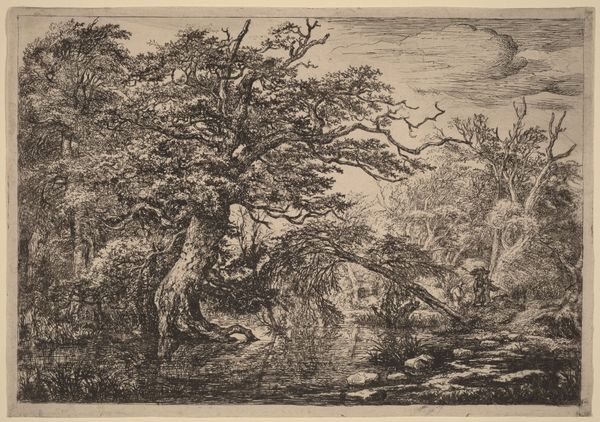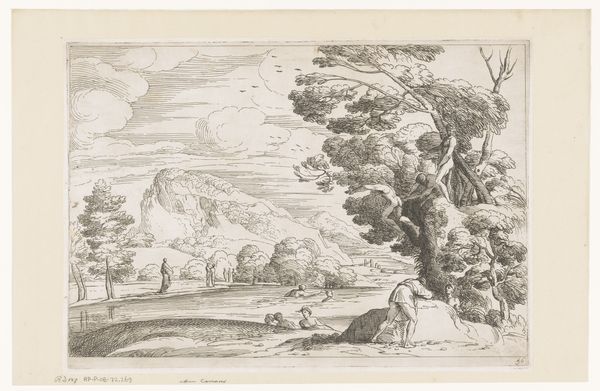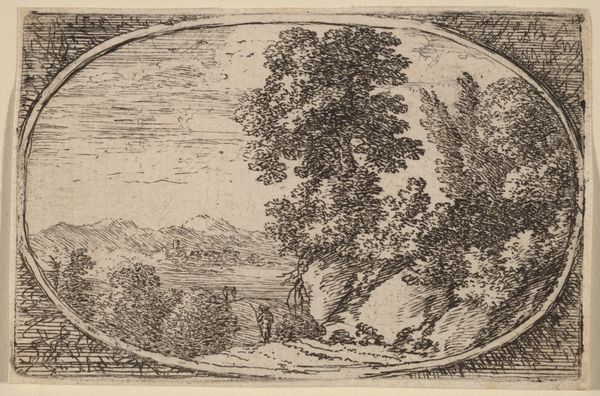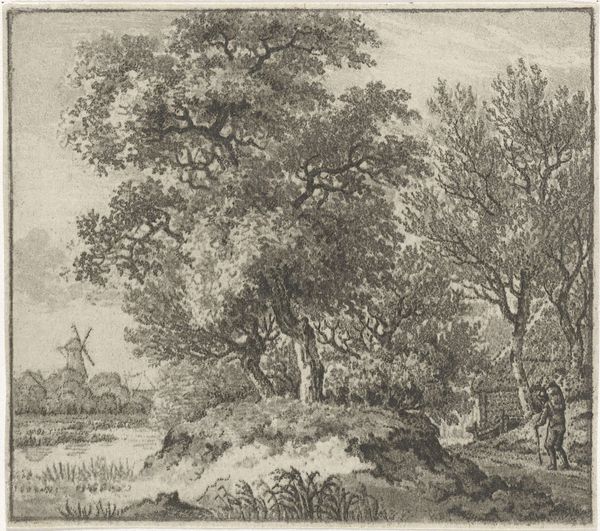
print, etching, engraving
#
baroque
# print
#
etching
#
landscape
#
etching
#
engraving
Dimensions: height 125 mm, width 164 mm
Copyright: Rijks Museum: Open Domain
Curator: Let's turn our attention to Philipp Hieronymus Brinckmann's "Bospad met reizigers" from 1740. It’s a print, specifically an etching and engraving. The texture achieved through those lines immediately strikes me. What's your first impression? Editor: Immediately, I see fatigue and rest, like a melancholic song sung by trees—or more precisely, a forest caught mid-sigh. The intricate latticework of the trees, those tiny human figures resting…there’s a kind of tender exhaustion woven into the scene. Curator: That's lovely! And so much of that feeling, I think, stems from the materiality itself. Etching, particularly, involved a slow, laborious process, each line bitten into the metal with acid. I'm drawn to considering the amount of time spent and work completed to deliver us this vision. Brinckmann isn’t just representing a forest; he's almost *constructing* it through manual work, reflecting the period’s attitude to labour. Editor: Right, it's fascinating to consider that physicality in the creation, that repetitive act to transfer it into multiples. And it's interesting too how this aligns with Baroque landscapes generally. Brinckmann offers us, simultaneously, romantic scenery but, also, subtle propaganda depicting the wealth, cultivation, and control of a man over land. This work reminds me how high art served very clear socioeconomic aims. Curator: Yes, the social context is always important. The work makes me think about the function and purpose of the traveller depicted there. A moment captured in passing; who were they, where did they journey to, what trade and purpose were served through their presence on that road? Editor: Looking at this print, considering the time taken to create such intricate details, the role and status that art played in that society…It's hard not to look beyond a pretty picture and to look for more tangible understandings about landscape as resource and land use, and more. Curator: I see the figures huddling beneath those magnificent trees as a lovely depiction, small acts of communion in the world that still persist centuries on. It seems a privilege to observe it. Editor: Absolutely, but understanding how those depictions were funded, and understanding their purpose helps to inform our privilege. Thanks for walking me through the work.
Comments
No comments
Be the first to comment and join the conversation on the ultimate creative platform.
